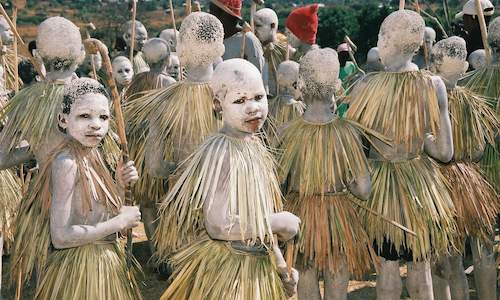9 Easy Facts About South African Culture Today Described
Table of ContentsThe Main Principles Of South African Culture Today What Does South African Culture Today Mean?Our South African Culture Today StatementsRumored Buzz on South African Culture TodaySome Ideas on South African Culture Today You Should KnowSouth African Culture Today Fundamentals Explained
A matter of significance in Zambian towns is the passing away of enjoyed ones. All members of the village put money, time and initiative with each other for the burial of the deceased.During the grieving duration; males stay outside your home and the females stay inside your home of the deceased. After speaking about the departed, the town walks to the area of funeral to say their last goodbyes. Music and dancing is a very vital facet of the Zambian society. The numerous tribal systems have their very own dance types; nonetheless, makishi prevails among all people.
South African Culture Today Things To Know Before You Buy
When it involves music, drums are used one of the most, with a variety of drumming events. In Zambia, majority of individuals are Christian; Protestant and Roman Catholic. There are small teams of Muslims and Hindus, with the remainder complying with local native tribal ideas.

South African heritage and culture is profoundly varied, and includes many various teams of people who each have their own customs and ideas. Having such a variety of people and cultures is what makes South Africa so special. In truth feeling of the expression, we are a rainbow nation.
Making it the 7th on the listing of countries with the most Portuguese people in it outside of Portugal. Portuguese is not only a society, however it is also a language and a nationality. Portuguese individuals originate from the country of Portugal in Europe, nonetheless, due to Portugal (like several various other countries in Europe) exploring the globe and overcoming other countries throughout the 15th 20th centuries, South Africa has what we call Portuguese South African's living in it.
South African Culture Today Fundamentals Explained
Amongst the prominent attributes of the topography is a plateau that covers practically 2 thirds of the center of the nation. The plateau facility increases towards the southeast, where it climaxes in the Drakensberg variety, part of an escarpment that divides the plateau from the coastal locations. The Drakensburg consists of Champagne Castle, the greatest optimal in the country.
The area north of the Witwatersrand, called the bushveld, inclines downward from eastern to west toward the Limpopo River, which creates the international boundary. The western area of the plateau, the middleveld, also comes down in the direction of the west and varies in altitude between the highveld and bushveld. In between the Drakensburg and the eastern and southerly coastline, the land comes down to the sea.
Nearer the shore there is a low-lying plain called the eastern lowveld. Southwest of the plateau the country becomes progressively much more dry, paving the way to the hostile desert of the Great Karroo, verged on the east by the lower, better sprinkled plateau of the Little Karroo. Dividing the dry southern interior from the sandy coastal of the southerly shore and West Cape is another range, the Langeberg.
7 Simple Techniques For South African Culture Today
The nation's racially, ethnically, and politically split history has produced national and subnational symbols that still function as icons of the nation, and others find here icons that are approved only by specific groups. The monuments to white inhabitant conquest and political supremacy, such as the Afrikaner Voortrekker ("pioneer") Monument in Pretoria and the Rhodes Monolith recognizing the British colonial realm home builder and Cape prime priest Cecil Rhodes, stay sectarian symbols.
The first modern-day citizens were the San ("bushman") hunter-gatherers and the Khoi ("Hottentot") individuals, who herded animals (South African culture today). The San might have been existing for countless years and left evidence of their visibility in hundreds of ancient cave paints ("rock art"). Bantu-speaking clans that were the ancestors of the Nguni (today's amaZulu, amaXhosa, amaSwazi, and vaTsonga peoples) and Tswana-Sotho language Click Here teams (today's Batswana and Southern and Northern Basotho) moved down from eastern Africa as very early as the fifteenth century

Both former republics of the Orange Free State and Transvaal (South African Republic) were developed by Afrikaner inhabitants who defeated and dispossessed the Basotho and Batswana. Lesotho would certainly have been forcibly integrated right into the Orange Free State without the extension of British protection in 1869. The ultimate unification of the country arised from the South African Battle (18991902) between the British and the 2 Afrikaner republics, which reduced the country to wreck at the beginning of the twentieth century.
Afrikaners historically considered themselves the only true South Africans and, while providing full citizenship to all locals of European descent, refuted that standing to people of color up until the autonomous change of 1994. British South Africans retain a sense of cultural and social connection to Great Britain without deteriorating their identification as South Africans.
Getting The South African Culture Today To Work
The diversity and fragmentation within ethnic collections and the balance of tensions between those groups throughout look at these guys the twentieth century stopped interethnic civil dispute. While intergroup tensions over resources, entitlements, and political dominance continue to be, those problems are as most likely to match Zulu against Zulu as Zulu against Xhosa or African versus Afrikaner.
From colonial India, British sellers and managers brought the rounded metal ornamental roofs and slim shoelace work columns that still represent the verandas of homes in communities and cities throughout the nation. Holy places add a vital architectural facet also in the smallest communities. Along with the soaring steeples and classic stonework of Afrikaans Dutch Reformed churches, Anglican churches, synagogues, mosques, and Hindu temples supply variety to the spiritual architectural scene.

Slaughtering and the developing of traditional cereal beer are crucial in securing the involvement and a good reputation of the ancestors who are taken into consideration the guardians of good luck, success, and health. Indian communities preserve their indigenous cooking traditions and apply them on Islamic and Hindu ritual and ritualistic celebrations. Afrikaners and Coloured people gather at weekends and special events at multifamily bbqs called braais, where community bonds are strengthened.
Because this was the key financial enterprise of both black Africans and white colonists, dispute in between those teams focused on the property of grazing land and animals. In 1867, the largest diamond deposits in the world were found at Kimberley in the west main location. The riches from those areas aided fund the exploitation of the best gold coral reef on the planet, which was uncovered on the Witwatersrand in 1886.
How South African Culture Today can Save You Time, Stress, and Money.
This brought about misconceptions and calculated misstatement in the negotiations of white settlers and government authorities with African chiefs during the early american duration (South African culture today). In the establishment of African gets, some elements of communal and chiefly "tribal trust fund" land tenure were preserved, and also in white backwoods, types of common period were still practiced in areas with African neighborhoods
After the autonomous improvement of 1994, programs for land restitution, redistribution, and reform were instituted, yet development has been slow-moving. The white minority still manages eighty percent of the land. In the wake of farming land invasions in Zimbabwe, the Division of Land Affairs has actually promised to speed up land redistribution.
 Alexa Vega Then & Now!
Alexa Vega Then & Now! Keshia Knight Pulliam Then & Now!
Keshia Knight Pulliam Then & Now! Melissa Sue Anderson Then & Now!
Melissa Sue Anderson Then & Now! Kerri Strug Then & Now!
Kerri Strug Then & Now! Sarah Michelle Gellar Then & Now!
Sarah Michelle Gellar Then & Now!